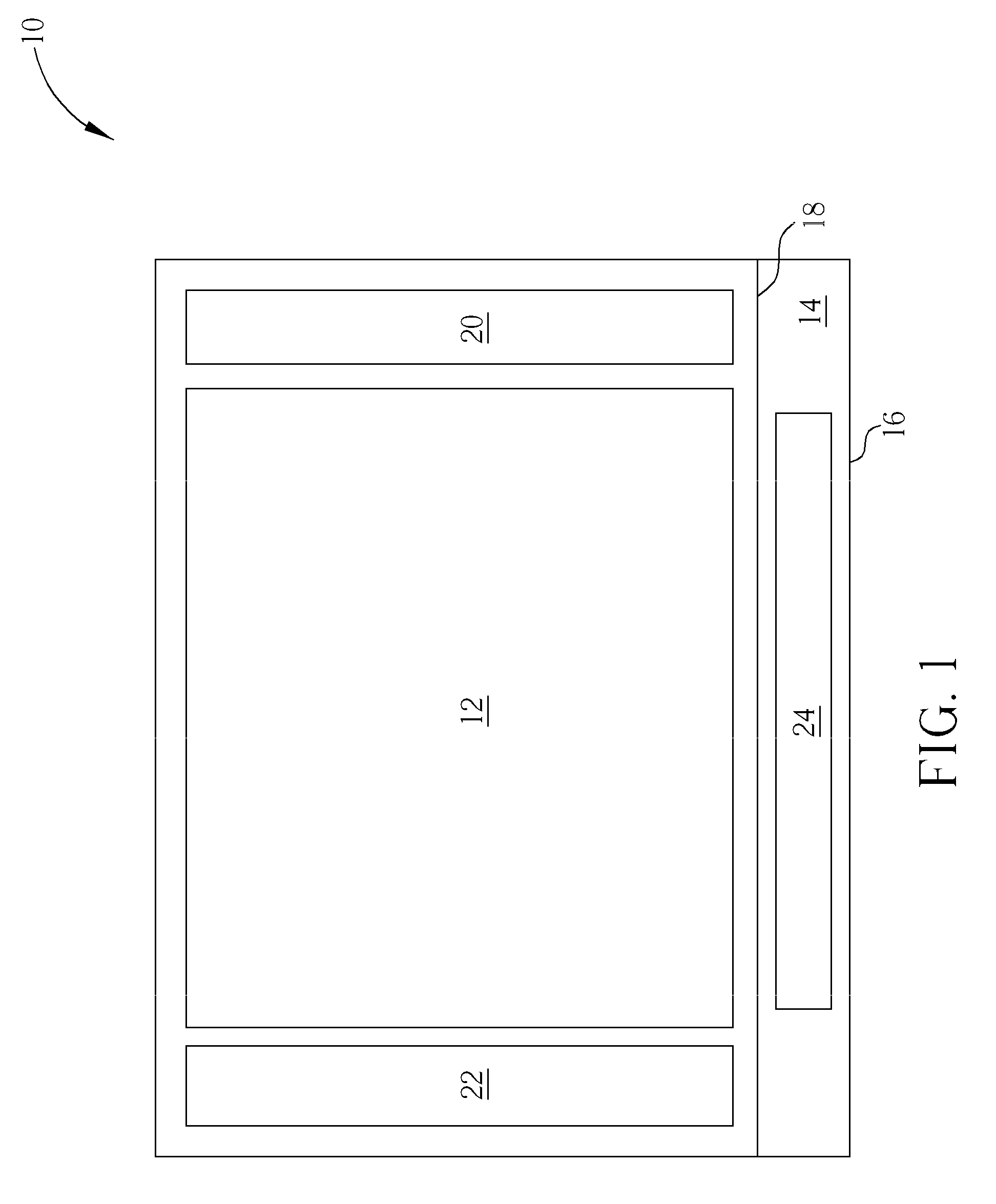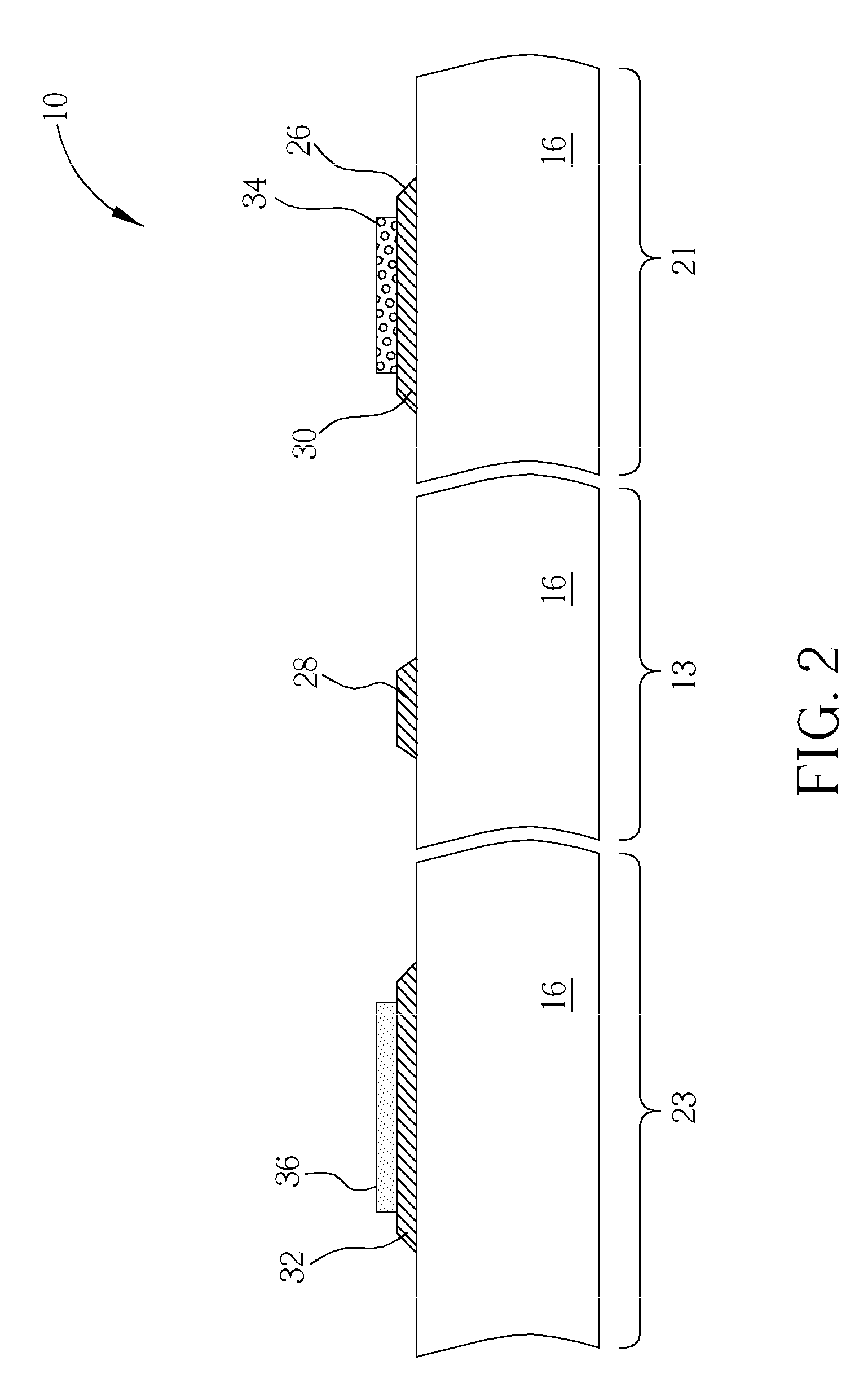Flat display panel, UV sensor and fabrication method thereof
a technology of ultraviolet light and display panel, which is applied in the field of ultraviolet light (UV) sensors, can solve the problems of increasing uv radiation near the surface of the earth every year, pathological changes in human skin, and difficult for uv-c radiation to reach the earth's surface, and achieves low fabrication cost, high integration probability, and high stability
- Summary
- Abstract
- Description
- Claims
- Application Information
AI Technical Summary
Benefits of technology
Problems solved by technology
Method used
Image
Examples
first embodiment
[0024]FIG. 2 to FIG. 4 are partial cross-sectional diagrams illustrating the fabrication method of the flat display panel of the present invention. Referring to FIG. 2, during the fabrication method of the flat display panel 10 of the present invention, a lower substrate 16 is first provided. Then a patterned first conductive layer 26 is formed on the surface of the lower substrate 16. The patterned first conductive layer 26 includes a gate electrode 28, a bottom UV sensing electrode 30, and a bottom visible light sensing electrode 32. The fabrication method of the patterned first conductive layer 26 may include first depositing a first conductive layer (not illustrated) on the surface of the lower substrate 16 and performing a patterning process to the first conductive layer such as a photolithography-etching-process for removing parts of the first conductive layer. After the patterning process, the remaining patterned conductive layer 26 includes the gate electrode 28, the bottom ...
third embodiment
[0034]Referring to FIG. 9, FIG. 9 is a schematic cross-sectional diagram of a flat display panel 100 of the present invention. The flat display panel 100 of the present embodiment is a low temperature polycrystalline silicon (LTPS) display panel. The flat display panel 100 includes a lower substrate 102, an upper substrate 104, and a liquid crystal material layer 106 disposed between the lower substrate 102 and the upper substrate 104. The flat display panel 100 further includes a UV sensor 108 and a plurality of pixel structures 110 disposed in a peripheral region and a display region of the flat display panel 100 respectively. The UV sensor 108 includes at least a UV sensing structure 112 which from bottom to top includes a bottom UV sensing electrode 114, a UV sensing device 116, and a top UV sensing electrode 118. The UV sensing device 116 is composed of a patterned first silicon-rich dielectric layer 120 with a refractive index in a range of about 1.7 to about to about 2.5. Pre...
PUM
 Login to View More
Login to View More Abstract
Description
Claims
Application Information
 Login to View More
Login to View More - R&D
- Intellectual Property
- Life Sciences
- Materials
- Tech Scout
- Unparalleled Data Quality
- Higher Quality Content
- 60% Fewer Hallucinations
Browse by: Latest US Patents, China's latest patents, Technical Efficacy Thesaurus, Application Domain, Technology Topic, Popular Technical Reports.
© 2025 PatSnap. All rights reserved.Legal|Privacy policy|Modern Slavery Act Transparency Statement|Sitemap|About US| Contact US: help@patsnap.com



